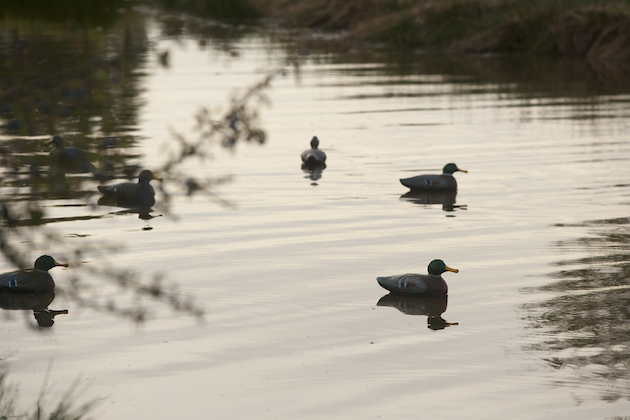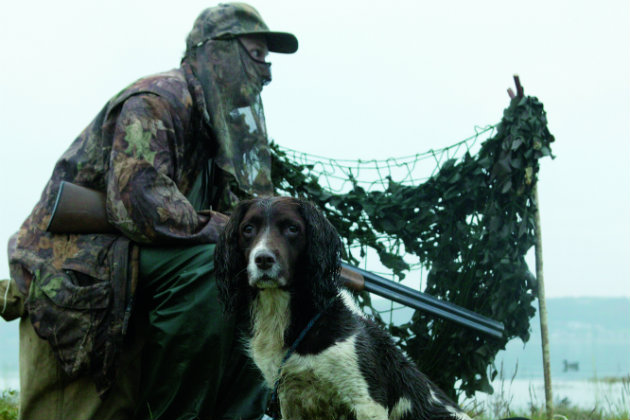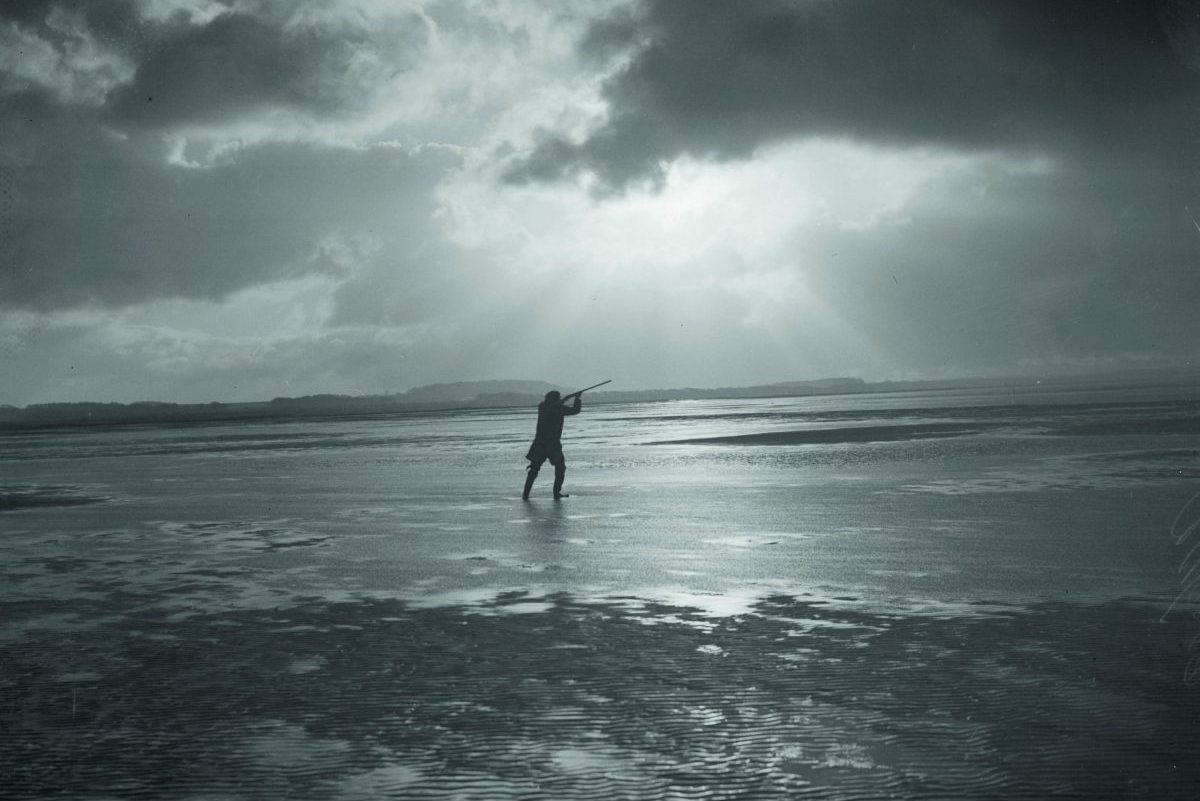Techniques for mastering a flightpond at dusk
Graham Brown of Purbeck Shooting School talks to Paul Quagliana about the different techniques that need to be learned

Graham Brown’s student Giacomo Drax is lucky enough to have access to a flight pond that he occasionally shoots with his father Jeremy.
Shooting ducks at dusk or in darkness that are responding to decoys around a pond requires a well-fitting gun and steady nerves. With an evening flight on the cards, Graham took Giacomo around the Purbeck Shooting School to look at seven different targets that each simulated the kind of chances you might get around a flightpond.
While it is hard to replicate with clay pigeons the uncertain flightpaths that wildfowl may take, Graham had laid on a superb range of clays with a heavy emphasis on the more instinctive shooting that this type of wildfowling requires.

Targets one and two
Graham started on a pair of clays, the first a lowish left-to-right incomer that represented a duck dropping into a pond, the right-to-left a startled duck that was coming in to alight on the pond but spots something suspicious at the last moment and breaks away.
Graham said: “For the first clay I would recommend maintained lead. As the clay is dropping in, other techniques could lead to greater gun speed than we require and this can result in over-leading the clay and effectively shooting too far in front of it.
“For the second clay I would recommend the pull-away technique. Here, gun control is essential and a slow increase in gun speed is required to get ahead of the clay and smash it. It is important not to panic and to keep control. If you react too quickly it can be too fast for the target. Match your movement to the target’s speed.”

Target three

The looper clay is designed to get the Gun used to the sudden appearance of a duck
The third clay that Graham showed Giacomo was a tall looper that came from behind vegetation on the right-hand side of Giacomo’s field of vision, appearing quite quickly. Graham said: “Ducks round a flightpond can come out of nowhere and your reactions have to match them. The idea behind this clay is to get the eyes and hands to react to a sudden appearance of a target. It is very much a reflex shot aimed at ducks that may suddenly flare if they see you. For this sudden shot, which allows little time to think or plan, I would recommend the interception technique.”

Keep your gun high and don’t be afraid to look above you
Target four
The fourth clay was overhead and from behind. Graham said: “This is a classic decoyed duck clay, where a duck comes high from behind and takes you by surprise. When shooting this target it can pay to tip your head back so you see it at the earliest opportunity. When you see it, mount the gun and with a slow bayonetting action come up to the base of it. Remember that to shoot in front of an overhead going-away target you need to shoot beneath it. Again, this clay is suited to the interception technique.”

A gentle-pull away is a good technique to use here
Target five
The fifth clay, a floating crosser coming from left-to-right, was intended to look like a duck scouting or skirting the edge of a pond. Graham’s advice: “This isn’t a quick target and using a gentle pull-away on this clay should work well. Most decoyed duck at dusk are shot at fairly close range.”

A positive bayoneting action through the target is what is required here
Target six
A day out practising for decoyed duck shooting wouldn’t be complete without the inclusion of the famous springing teal clay. Teal are notoriously fast and manoeuvrable birds. Graham said: “What is required here is a positive bayonetting action directly through the target. The movement should have a punchy feel to it and the shot is instinctive using the interception technique. Come up through it and shoot a little above it while it is still rising.”

Be aware of the lead required when using the maintained lead technique
Target seven
The final target was a left-to-right incoming crosser but more distant than Target 5. The clay could represent a duck passing on the far side of a pond.
Graham said: “This clay is similar to Target 5 but by placing it further out I want Giacomo to be aware of the lead required when using the maintained lead technique. The distance and additional lead required will give him a greater perception of this. The key to decoyed duck shooting is to not shoot too fast. In general, a steady style of shooting is required unless you are surprised by a teal. Moving a gun is like a road journey: the more times you complete the journey, the less need there is to look at the map. Routine is one of the vital aspects of becoming a good Shot. Plan what you are doing beforehand, but what you do when executing the plan should be so well drilled that you don’t have to think about it.”
TOP TIPS: Duck shooting!
TOP TIPS: Duck shooting! Shooting instructor, Mark Russell, takes a closer look at those elusive duck-type targets to get you…
Cartridges for duck shooting
Cartridge choice can create an interesting debate in all areas of shooting. From manufacturer and loads through to the size of cartridge and shot…
Conclusion
So, did Graham’s range of clays and advice work? Jeremy and Giacomo, accompanied by gamekeeper Bill Smith, headed for their pond with the sun not quite starting to sink. Jeremy had some excellent rubber decoy ducks that were hollow with an open, weighted ring in their bases. When dropped on the pond they filled with air to form a full-bodied decoy that floated merrily on the water. They folded flat when not in use.
With the decoys deployed, it was time to set up in the hides and wait to see what dusk brought. Flights of cormorants and some geese passed in the distance and three mallard that had risen when they arrived wheeled high overhead. Dusk came and the birds were late arriving. Finally they came, flickering in the half light. Giacomo scored a teal and mallard, Jeremy a teal, some single mallard and the finale of two shots followed by two thumps in the darkness — a fine left and right at mallard.
For novices, their first outing to a flightpond can be daunting. The darkness and unfamiliarity is unsettling.
It is important to know exactly where other Guns and their hides are for safety reasons. Also, dress according to the weather and, as Graham advises, if possible practise at a clay ground and don’t rush your shots.










